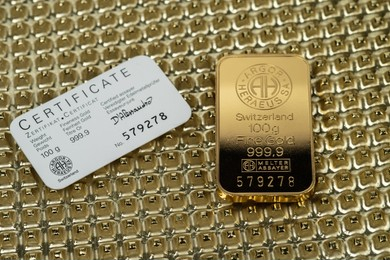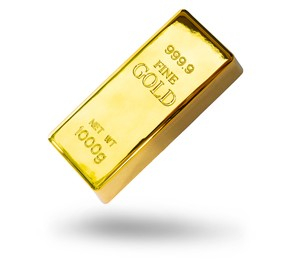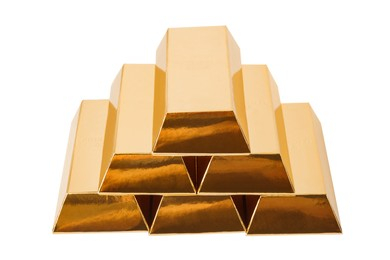Gold bricks are some of the most valuable and sought-after commodities in the world. They are solid blocks of gold, typically produced by gold mines or refineries, and used for a variety of purposes, including investment, trade, and manufacturing.
The most common weight for a gold brick is 1 kilogram (kg), which is equivalent to 32.15 troy ounces. Other standard weights include 500 grams, 10 ounces, and 1 ounce.
In this article, we will explore the various aspects of gold brick weight, including how it is measured, factors affecting its weight, and its importance in different industries and fields.
What is the Weight of a Gold Brick?
The weight of a gold brick can vary depending on its size, purity, and other factors. However, there are standard weights for gold bricks that are commonly used in the industry.
The most common weight for a gold brick is 1 kilogram (kg), which is equivalent to 32.15 troy ounces. Other standard weights include 500 grams, 10 ounces, and 1 ounce.
Several factors can affect the weight of a gold brick, including its purity, shape, and dimensions. For example, a gold brick with a higher purity level will be denser and therefore weigh more than a brick with a lower purity level. The shape and dimensions of the brick can also impact its weight, with thicker and wider bricks weighing more than thinner and narrower ones.
Another factor that can affect the weight of a gold brick is the presence of impurities or other metals in the alloy. Gold bricks that contain other metals, such as copper or silver, will be less dense and therefore weigh less than a pure gold brick of the same size.
The presence of air pockets or bubbles in the brick can also affect its weight, as these pockets reduce the overall density of the brick.
Understanding Gold
Gold is a chemical element with the symbol Au and atomic number 79. It is a soft, dense, yellow-colored metal with a high luster and a malleable and ductile nature, making it easy to shape and work with. It is also highly resistant to corrosion, tarnish, and oxidation, making it an excellent choice for use in jewelry, coins, and other decorative items.
Gold is commonly measured in terms of its purity, which is expressed in karats (kt) or fineness. Karat refers to the amount of gold present in an alloy, with 24 karats (24kt) of gold being the purest form of gold, while a 14kt gold item contains 14 parts gold and 10 parts of other metals.
Fineness, on the other hand, is a measure of the percentage of pure gold in an alloy, expressed as parts per thousand. For example, 18-karat gold has a fineness of 750, meaning it contains 750 parts per thousand of pure gold.
There are several different forms in which gold is available, including gold bars, gold coins, gold nuggets, and gold dust. Gold bars, also known as gold bullion or gold bricks, are the most common form in which gold is traded and stored.
They come in various sizes, ranging from a few grams to several kilograms, and are typically produced by refineries or gold mines. Gold coins, on the other hand, are minted by government mints and are often used as legal tender. Gold nuggets and dust are rare and valuable forms of gold that are typically found in natural gold deposits.
Good Delivery Bars

Good Delivery bars are produced by LBMA-accredited refineries and are widely recognized as the standard for quality and purity in the gold market. These bars must meet strict criteria in terms of weight, dimensions, and purity, with a minimum fineness of 995 parts per thousand for gold and 999 parts per thousand for silver.
The dimensions of a Good Delivery gold bar must be within certain parameters, with a length between 210 and 290 millimeters, a width between 55 and 85 millimeters, and a thickness between 25 and 50 millimeters. The weight of a Good Delivery gold bar must be between 350 and 430 troy ounces (10.9 to 13.4 kilograms), with variations of no more than 0.5% above or below this range.
Good Delivery bars are typically used for large transactions and are stored in high-security vaults around the world. They are traded on the global over-the-counter market, where they are valued based on the current spot price of gold.
Gram Bars

Gram bars are typically smaller in size and weight than Good Delivery bars, making them more accessible to individual investors and collectors. These bars are usually produced by private mints or refineries and can range in weight from 1 gram to 100 grams.
Gram bars are valued based on their weight and purity, with higher-purity bars commanding a higher price per gram. The most common purity levels for gram bars are 99.99% and 99.9%, which are equivalent to 24-karat and 22-karat gold, respectively.
One advantage of gram bars is their versatility in terms of storage and transportation. They can be easily stored in a safe deposit box or a home safe, and can also be transported more easily than larger bars. This makes them a popular choice for investors who want to maintain a physical holding of gold in their portfolio.
Kilobars

Kilobars typically weigh 1 kilogram (1000 grams) and are produced by both government mints and private refineries. They are highly sought after by investors and are widely traded on the global market. Kilobars are valued based on their weight and purity, with higher-purity bars commanding a higher price per gram.
One advantage of kilobars over gram bars is their lower premium per gram. Since the production cost of a 1-kilogram bar is lower than the production cost of 1000 individual 1-gram bars, the premium per gram on a kilobar is typically lower than that of a gram bar.
Kilobars are also a popular choice for storage and transportation due to their moderate size and weight. They can be easily stored in a home safe or a bank vault, and can also be transported more easily than larger bars. This makes them a popular choice for investors who want to maintain a physical holding of gold in their portfolio, but also want the flexibility to store and transport their investment.
Tola Bars

Tola bars weigh approximately 11.66 grams and are often used for jewelry making and as a form of investment. They are typically produced by private mints and refineries and are valued based on their weight and purity.
Tola bars are often sold in multiples, such as 1, 5, or 10 Tola bars. The most common purity level for Tola bars is 22 karat, which is equivalent to 91.67% pure gold. However, some Tola bars may be produced at higher or lower purity levels depending on the manufacturer.
Troy Ounce

A Troy ounce is slightly heavier than a standard (avoirdupois) ounce and is equivalent to approximately 31.1 grams. It is named after the city of Troyes in France, where it was first used as a unit of measurement for precious metals.
Troy ounces are commonly used to measure the weight of gold bars and coins and are also used as a pricing reference for gold and other precious metals on global markets. For example, the current market price of gold is quoted in US dollars per Troy ounce.
When buying or selling gold, it is important to know the weight of the gold in Troy ounces in order to accurately calculate its value based on the current market price. Most gold bars and coins are labeled with their weight in Troy ounces for this reason.
Cast and Minted Bricks
Cast gold bricks are produced by melting gold and pouring it into a mold. This process results in a rougher, less uniform appearance compared to minted bricks. Cast bricks may also have imperfections or impurities due to the casting process.

Minted gold bricks, on the other hand, are produced by pressing gold blanks under high pressure in a minting press. This process results in a more uniform appearance and a smoother texture compared to cast bricks. Minted bricks are also more likely to have a higher degree of purity due to the refining process that the blanks undergo prior to minting.
While cast bricks may be less expensive to produce, minted bricks are often preferred by investors due to their higher degree of purity and uniform appearance. Minted bricks also often carry a higher premium compared to cast bricks due to their superior quality.
FAQs
How much is a gold bar brick worth?
The value of a gold brick varies depending on its weight, purity, and current market conditions. As of May 3, 2023, the current market price of gold is approximately $57.31 per gram. Therefore, a gold brick weighing 1 kilogram (1000 grams) would be worth approximately $57,310 USD if it is 100% pure (24 karats).
How much is a brick of pure gold worth?
A gold brick weighing 1 kilogram (1000 grams) would be worth approximately $57,310 USD if it is 100% pure (24 karats).
How many grams is a brick of gold?
The weight of a gold brick can vary depending on its type and manufacturing process. A standard Good Delivery gold bar, which is used in international trading, weighs approximately 400 troy ounces or 12.44 kilograms. However, gold bricks can also come in smaller sizes such as gram bars or kilobars.
How much does a brick of gold weigh and cost?
The cost of a gold brick can vary depending on its weight and purity, as well as any additional premiums charged by the seller. As of May 3, 2023, the cost of a 1-kilogram gold bar of 99.99% purity sold by a reputable dealer can range from $58,000 to $61,000 USD.